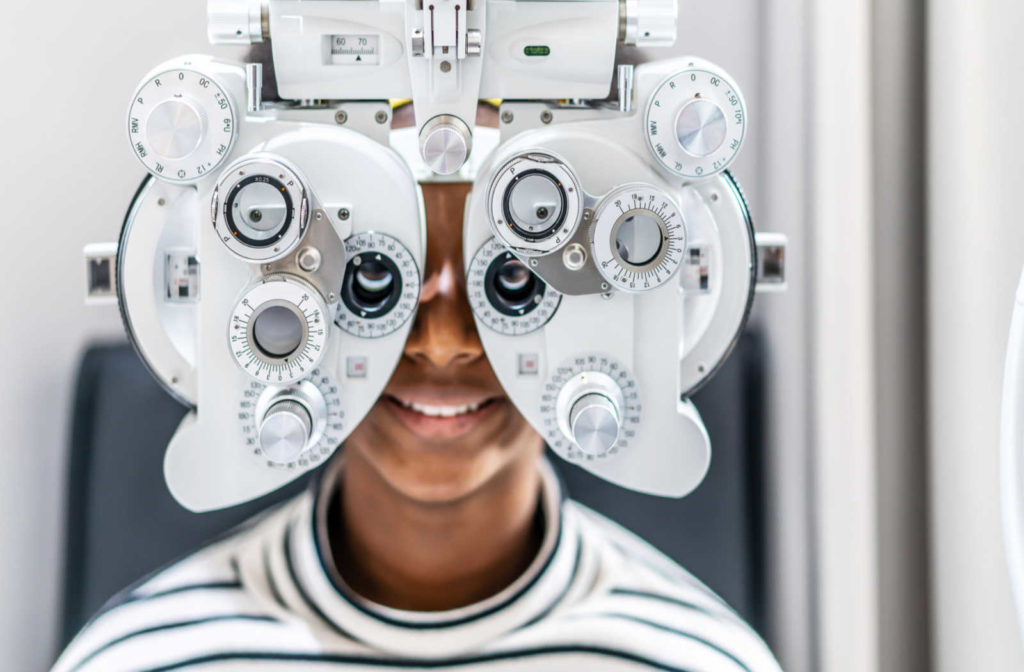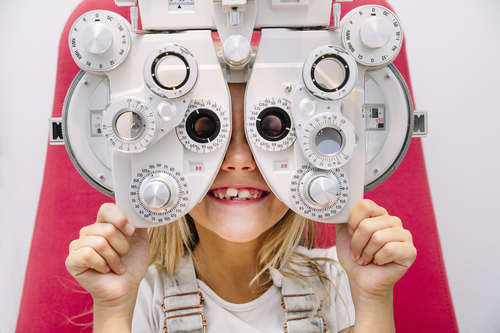Discover the most effective Optometrist Chino for Comprehensive Eye Care
Discover the most effective Optometrist Chino for Comprehensive Eye Care
Blog Article
Discovering the current Technological Advancements in Optometry and What They Mean for Eye Doctors
In the ever-evolving field of optometry, recent technological advancements are reshaping exactly how practitioners approach eye care. From the accuracy of Optical Comprehensibility Tomography to the nuanced understandings used by AI-driven analysis devices, these advancements are setting new standards in person evaluation and therapy. Teleoptometry is poised to redefine accessibility, ensuring that experience goes beyond geographical limitations. As these developments penetrate the technique, optometrists are confronted with the difficulty of welcoming these tools to enhance client end results. The concern stays: exactly how will these technical shifts redefine the duties and duties within the occupation?
Technologies in Diagnostic Equipment
Advancing the area of optometry, developments in diagnostic devices have changed the method eye treatment experts examine and detect ocular problems and aesthetic disabilities. The previous decade has actually witnessed substantial technological improvements, allowing even more accurate and thorough evaluations.
An additional secret advancement is the intro of innovative corneal topography systems, which map the surface curvature of the cornea with precision. These tools are specifically valuable for fitting contact lenses and detecting corneal disorders. Electronic retinal imaging has changed conventional ophthalmoscopy, supplying comprehensive, panoramic views of the retina that promote thorough visual assessments.
The advancement of wavefront aberrometry has likewise been vital, making it possible for the analysis of refractive errors with unrivaled precision (Eye Doctor Optometrist). This modern technology aids in personalizing corrective lenses and improving surgical results for refractive surgical procedures. Collectively, these analysis advancements empower optometrists to deliver premium person treatment, making certain early intervention and tailored therapy techniques, eventually enhancing aesthetic wellness results
AI in Person Monitoring
Structure on the foundation of innovative diagnostic tools, the incorporation of expert system (AI) in patient management stands for a transformative jump for optometry. AI systems are increasingly used to boost effectiveness, precision, and customization in patient treatment. By examining substantial amounts of data, AI can determine patterns and forecast possible eye conditions, enabling optometrists to customize interventions better. This capacity is crucial in managing chronic eye conditions such as glaucoma and diabetic person retinopathy, where early discovery and continual tracking are vital.
In addition, AI-driven systems assist in streamlined individual interactions and administrative procedures. Automated organizing, virtual assessments, and personalized follow-up plans not only improve client fulfillment however likewise enhance time administration for experts. These systems can triage patients based on the seriousness of their problems, making certain that those in essential need get punctual interest.
Furthermore, AI improves decision-making by supplying optometrists with evidence-based recommendations and therapy pathways. By integrating data from digital wellness records, AI tools use understandings that notify clinical decisions, reducing the danger of errors and enhancing person outcomes. As AI proceeds to advance, its function in person management will likely expand, improving the landscape of optometric treatment.
Advancements in Retinal Imaging
In the realm of optometry, retinal imaging has observed impressive technical innovations that are boosting diagnostic abilities and person care. Innovations such as Optical Coherence Tomography (OCT) and fundus photography have actually transformed just how eye doctors examine the retina and imagine. OCT, particularly, gives high-resolution, cross-sectional photos of the retina, permitting the in-depth examination of its layers. This capacity is indispensable for very early detection and administration of problems like glaucoma, diabetic person retinopathy, and age-related macular degeneration.
Improved imaging modalities like OCT angiography are more refining diagnostic precision. This non-invasive technique maps blood circulation in the retina, offering essential understandings right into vascular wellness without the demand for dye shots. Furthermore, adaptive optics technology is being integrated right into retinal imaging systems to fix ocular aberrations, delivering unprecedented photo clarity. Such developments facilitate the recognition of minute retinal adjustments that can indicate illness progression.
In addition, developments in synthetic knowledge are boosting retinal imaging by enabling computerized evaluation of large datasets. These systems help eye doctors in determining patterns a measure of pathology, consequently improving analysis accuracy and effectiveness. Jointly, these advancements are changing retinal imaging into a foundation of modern eye treatment, boosting outcomes and broadening therapeutic opportunities.
Teleoptometry's Expanding Function
Teleoptometry is progressively ending up being a crucial part of eye care, driven by advancements in electronic communication and diagnostic tools. This is especially helpful in underserved and country areas where accessibility to specialized eye care is usually limited.
The assimilation of man-made intelligence (AI) additional enhances teleoptometry, enabling the evaluation of aesthetic information and aiding in the discovery of ocular conditions such as glaucoma and diabetic retinopathy. AI-powered formulas can quickly analyze complex imaging data, providing eye doctors with valuable understandings that reinforce clinical decision-making.
Moreover, teleoptometry supports connection of treatment via smooth assimilation with electronic health and wellness records (EHRs), allowing optometrists her explanation to preserve detailed patient histories. When seeking advice from with various practitioners., this makes certain that patients receive constant and personalized care also.
In spite of these advantages, obstacles remain, including making certain data protection and handling person assumptions. However, teleoptometry represents a considerable stride in the direction of more obtainable, reliable, and patient-centered eye care. As modern technology advances, its role is positioned to increase additionally.

Future Patterns in Eye Treatment
A myriad of cutting-edge patterns is set to improve the future of eye care, driven by technical advancements and the progressing demands of people. One significant trend is the assimilation of expert system (AI) in diagnostics, which assures to improve the precision and efficiency of eye exams. AI formulas can analyze vast amounts of data from retinal images, potentially discovering problems like diabetic person retinopathy and glaucoma earlier than conventional approaches.
In addition, personalized medicine is obtaining traction in optometry, with genetic screening educating personalized treatment strategies. This method aims to enhance person outcomes by tailoring interventions to private genetic accounts. Wearable technology, such as smart contact lenses, is also coming up, supplying real-time monitoring of intraocular pressure or sugar levels, therefore giving continuous understandings right into eye and systemic health and wellness.
The adoption of increased truth (AR) and online truth (VIRTUAL REALITY) in training and individual education is another emerging trend. These technologies provide immersive experiences that can improve understanding and skills both for clients and eye doctors. Opticore Optometry As these fads advance, optometrists should stay abreast of technical developments to supply innovative treatment, making certain enhanced person outcomes and fulfillment in the vibrant landscape of eye treatment.
Verdict

Collectively, these analysis developments empower eye doctors to deliver exceptional patient care, guaranteeing early intervention and tailored therapy methods, inevitably enhancing visual health results.

As these technologies continue to develop, eye doctors must adjust and incorporate them right into practice, ultimately optimizing process performance and raising the criterion of eye advice treatment delivered to people.
Report this page